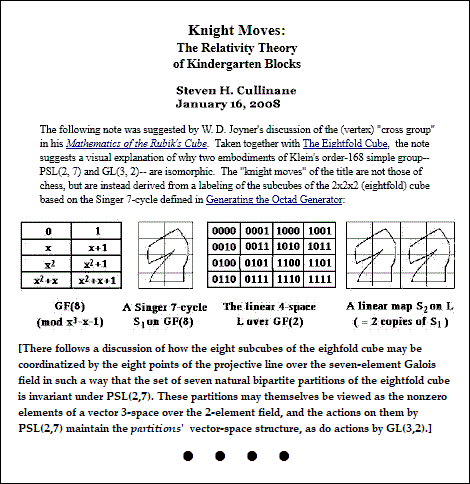|
In-Between "Spacing" and the "Chôra "
in Derrida: A Pre-Originary Medium?
By Louise Burchill
(Ch. 2 in Henk Oosterling & Ewa Plonowska Ziarek (Eds.), Intermedialities: Philosophy, Arts, Politics , Lexington Books, October 14, 2010)
"The term 'spacing' ('espacement ') is absolutely central to Derrida's entire corpus, where it is indissociable from those of différance (characterized, in the text from 1968 bearing this name, as '[at once] spacing [and] temporizing' 1), writing (of which 'spacing' is said to be 'the fundamental property' 2) and deconstruction (with one of Derrida's last major texts, Le Toucher: Jean-Luc Nancy , specifying 'spacing ' to be 'the first word of any deconstruction' 3)."
1 Jacques Derrida, “La Différance,” in Marges – de la philosophie (Paris: Minuit, 1972), p. 14. Henceforth cited as D .
2 Jacques Derrida, “Freud and the Scene of Writing,” trans. A. Bass, in Writing and Difference (Chicago: University of Chicago Press, 1978), p. 217. Henceforth cited as FSW .
3 Jacques Derrida, Le Toucher, Jean-Luc Nancy (Paris: Galilée, 2000), p. 207.
. . . .
"… a particularly interesting point is made in this respect by the French philosopher, Michel Haar. After remarking that the force Derrida attributes to différance consists simply of the series of its effects, and is, for this reason, 'an indefinite process of substitutions or permutations,' Haar specifies that, for this process to be something other than a simple 'actualisation' lacking any real power of effectivity, it would need “a soubassement porteur ' – let’s say a 'conducting underlay' or 'conducting medium' which would not, however, be an absolute base, nor an 'origin' or 'cause.' If then, as Haar concludes, différance and spacing show themselves to belong to 'a pure Apollonism' 'haunted by the groundless ground,' which they lack and deprive themselves of,16 we can better understand both the threat posed by the 'figures' of space and the mother in the Timaeus and, as a result, Derrida’s insistent attempts to disqualify them. So great, it would seem, is the menace to différance that Derrida must, in a 'properly' apotropaic gesture, ward off these 'figures' of an archaic, chthonic, spatial matrix in any and all ways possible…."
16 Michel Haar, “Le jeu de Nietzsche dans Derrida,” Revue philosophique de la France et de l’Etranger 2 (1990): 207-227.
. . . .
… "The conclusion to be drawn from Democritus' conception of rhuthmos , as well as from Plato's conception of the chôra , is not, therefore, as Derrida would have it, that a differential field understood as an originary site of inscription would 'produce' the spatiality of space but, on the contrary, that 'differentiation in general' depends upon a certain 'spatial milieu' – what Haar would name a 'groundless ground' – revealed as such to be an 'in-between' more 'originary' than the play of differences it in-forms. As such, this conclusion obviously extends beyond Derrida's conception of 'spacing,' encompassing contemporary philosophy's continual privileging of temporization in its elaboration of a pre-ontological 'opening' – or, shall we say, 'in-between.'
|



.gif)


-actions-500w.jpg)












-GL(3,2)-Oct-2009.jpg)













